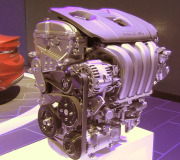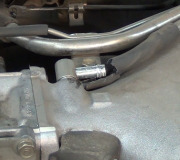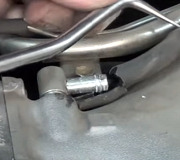It sounds terrible, typically I need to pump the gas in order to keep it from stalling once it starts. If I keep my foot on the pedal, it will stall and if I lay off the pedal it stalls, so I push down, let off and repeat and that combo seems to work.
It will not drive, it will stall when I let off the gas for a light/ stop sign or even if I slow down for a turn, when I accelerate there is big lag and at this point I can barely attain 20 mph on a straightaway.
I can hear it is not firing right either.
What I have done: For another recent problem I: Replaced battery, crankshaft position sensor, camshaft position sensor, distributor cap and rotor, plug wires, ignition coil and added another ground to the battery,
For this problem I have replaced: Precat o2 sensor, alternator, throttle position sensor, idle air control valve,
I have 3/4 full gas tank and I have put plenty of high quality injector cleaner in the gas and tried to run it long enough to let it work in there. I've also checked and repaired the micro sized vacuum lines associated with the EGR valve.
I'm able to read the codes off the computer and I am getting nothing that helps-- Code 12: battery cable disconnected recently and 55: end of all codes, occasionally code 51 (after replacing o2 sensor) comes after some rough idling.
My remaining thoughts would be to start with replacing the EGR valve.
Possibly look into a new PCM (computer)
One x one the fuel system- fuel pump, filter and pressure regulator are all together in the gas tank and I wonder. Fuel rail and injectors are a lot more accessible. I just need an intelligent and experienced mechanic to guide me to a good working truck. I need this truck to work for my business.
SPONSORED LINKS
Wednesday, September 18th, 2013 AT 10:21 AM




